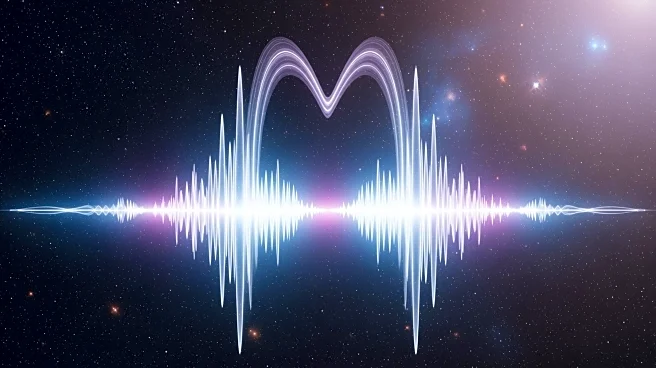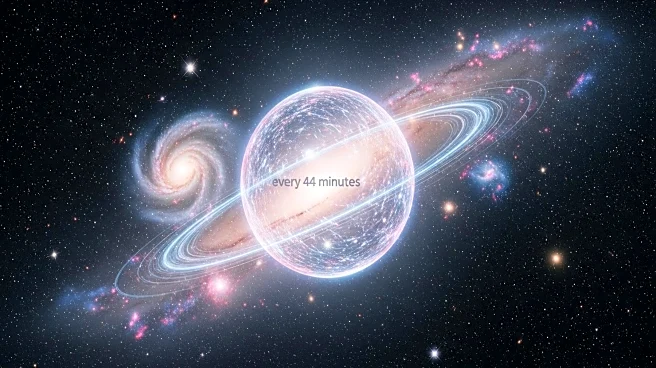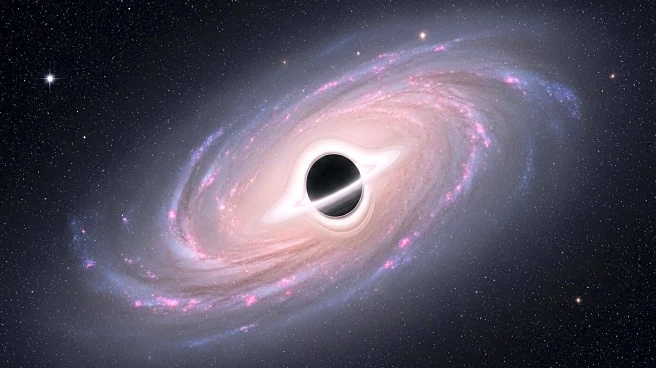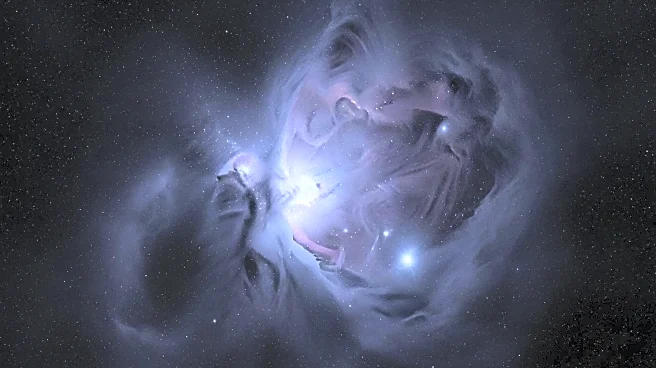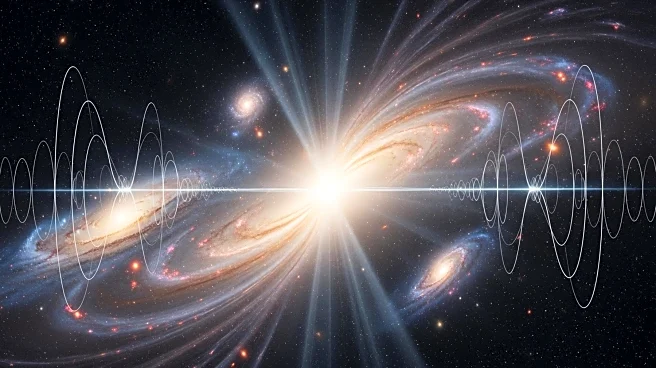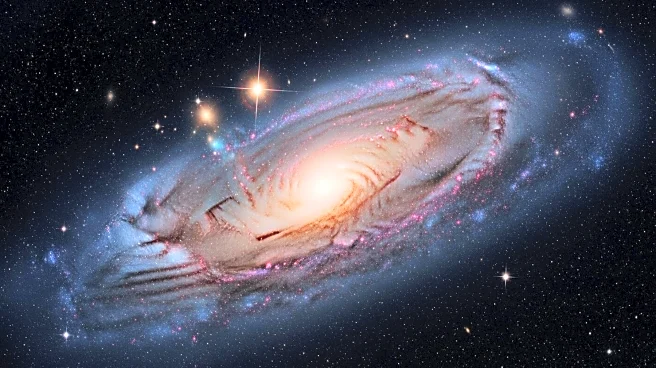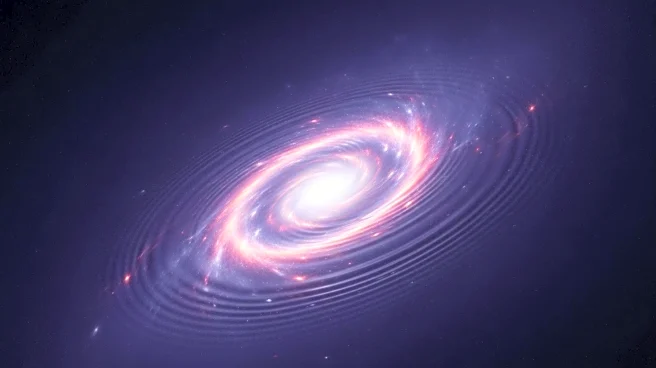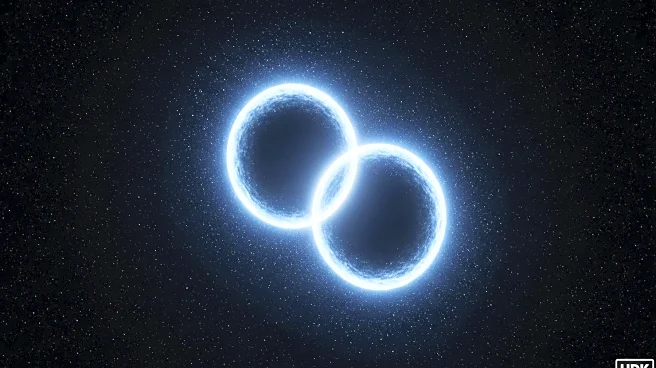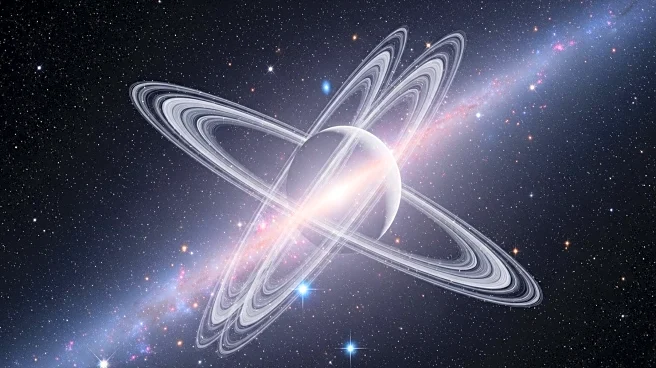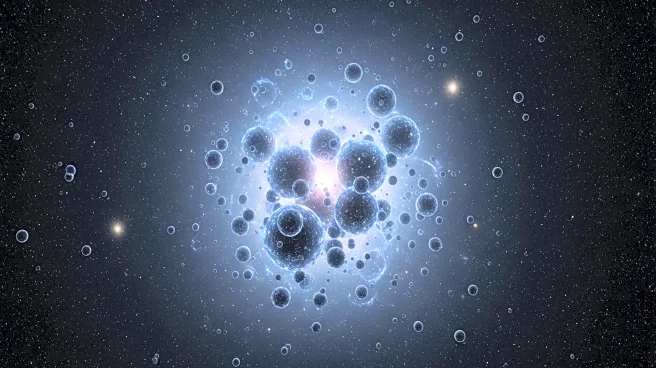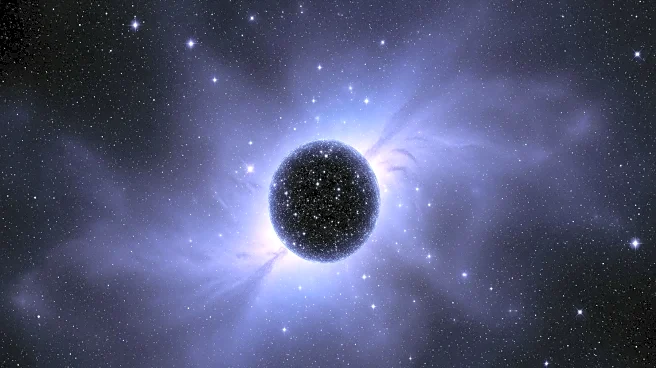What's Happening?
Astronomers have reported observations suggesting that extremely low-frequency gravitational waves are moving through the universe, potentially caused by overlapping waves from distant sources or a pair of nearby supermassive black holes. The findings,
published in the Journal of Cosmology and Astroparticle Physics, involve pulsars, which are dense neutron stars emitting radio pulses at steady intervals. These pulses are tracked by radio telescopes to study the universe's structure and behavior. The research, led by Hideki Asada and Shun Yamamoto from Hirosaki University, proposes a new approach using 'beat' effects to detect subtle influences on pulsar signals. The evidence, while promising, is not yet confirmed, but the scientific community believes it is approaching the first detection of nanohertz gravitational waves.
Why It's Important?
The potential detection of nanohertz gravitational waves could significantly impact our understanding of the universe's structure and the forces at play within it. If confirmed, these findings could provide insights into cosmic inflation and the behavior of supermassive black hole binaries, which are crucial for understanding galaxy formation and evolution. The research could also advance the field of astrophysics by offering new methods to study gravitational waves, which are ripples in spacetime caused by massive cosmic events. This could lead to breakthroughs in cosmology and particle physics, enhancing our knowledge of the universe's origins and its fundamental laws.
What's Next?
Future research will focus on strengthening the evidence for nanohertz gravitational waves and pinpointing their origin. If confirmed, scientists will need to determine whether these waves result from cosmic inflation or nearby supermassive black hole binaries. The method proposed by Asada and Yamamoto could help distinguish between these scenarios by identifying characteristic modulation in pulsar signals. Achieving a confirmed detection at the 5-sigma level could occur within a few years, potentially leading to new discoveries about the universe's early conditions and the dynamics of galaxy mergers.
Beyond the Headlines
The detection of nanohertz gravitational waves could have broader implications for understanding the universe's history and the processes that shaped it. The research highlights the importance of international collaboration in advancing scientific knowledge and the role of innovative methods in overcoming observational challenges. The study also underscores the potential for pulsars to serve as cosmic tools for exploring fundamental questions about spacetime and gravity, offering a glimpse into the universe's hidden dynamics.
